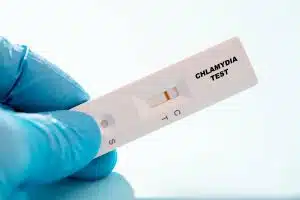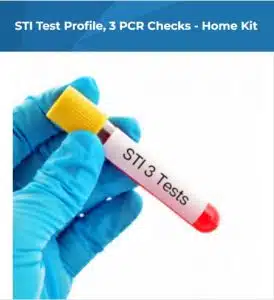
STI Profile Sampling is critical in preventing, finding, and treating sexually transmitted infections. In recent years, significant development and growth in these monitoring have reformed the field, offering more correct, accessible, detailed, and broad home screening methods, such as the rapid Chlamydia Instantaneous Result Test kit with an STI prescription. However, several issues persist, which makes ongoing efforts necessary to overcome them and aid the efficacy of these exams. Let’s find the developments made in STD Home Samples and the challenges continuously coming in. We’ll highlight the importance of early detection and treatment in combating STIs.
Advancements in technology:
-
Multiplex Screening:
Advancements in this type of monitoring have significantly advanced the efficiency and accuracy of STI monitoring. These exams allow the detection of multiple infections that spread through sexual activity from a single sample, streamlining the monitoring process and enabling prompt diagnosis of diseases. These exams use techniques such as PCR or nucleic acid amplification tests (NAATs), increasing sensitivity and specificity while reducing change times and medical costs.
Point-of-Care Monitoring:
Point-of-care monitoring has emerged as a game-changer in diagnosing and managing these infections. These medical exams provide quick results at the point of care. They end the need for lab processing and reduce the time between monitoring and treatment initiation. Point-of-care exams enable immediate interventions and allow timely partner notification and contact tracing, which is crucial for preventing the further spread of STIs.
Monitoring IVD:
The presence of these kits has significantly lifted access and privacy in monitoring STIs. They allow individuals to collect their samples and send them to a lab for analysis, providing comfort, solitude, and silence. Furthermore, these kits have proven particularly valuable in reaching vulnerable populations. And reducing barriers to monitoring, such as stigma, limited medical access, or privacy concerns.
Challenges in Sampling:
Asymptomatic Infections:
One of the significant challenges in screening diseases is finding infections that do not show symptoms. Many STIs, including chlamydia and HPV, can be without symptoms. Thus, routine monitoring makes finding infected individuals easier. Efforts are on the way to develop advanced monitoring plans, including risk-based screening and self-sampling options. They will also help to find rates and reduce the spread of infections that do not have symptoms.
Emerging Strains and Antimicrobial Resistance:
The birth of new strains of STIs, such as gonorrhoea, which is resistant to medicine, presents a significant challenge to monitoring and treatment systems. Rapidly changing pathogens and antimicrobial resistance require continuous monitoring and development of new screening methods to ensure correct diagnosis and proper treatment regimens. Ongoing research and close observation efforts are necessary to stay ahead of the growing landscape of STIs.
Stigma and Sampling Education:
Stigma and lack of awareness about STIs remain complex barriers to monitoring and treatment. Misconceptions, fear of judgment, and social results can prevent individuals from seeking this monitoring. Similarly, they hesitate to disclose their STI status. A complete education is necessary to address these challenges, including open conversations about sexual health, regular monitoring, and fostering caring environments for those affected by STIs.
How Sampling Helps Save Humans from Deadly Diseases
Diseases that spread through sexual activity pose a significant global public health challenge, affecting millions yearly. Its monitoring is crucial in promptly finding and treating these infections, preventing disease spread, and potentially saving lives.
Importance of Early Detection:
- Timely Diagnosis: These exams enable the early finding of infections and thus allow timely diagnosis and early starting of the treatment. Early diagnosis is necessary as many sexual disorders can multiply and cause severe health problems without treatment. Individuals can receive appropriate medical care by finding infections early. Therefore, it minimizes the risk of long-term health problems and even deaths related to untreated STDs.
- Preventing Disease Spread: One critical benefit of monitoring is its role in stopping deadly diseases. Early findings and treatment significantly reduce the risk of spreading infections to sexual partners. Therefore, by identifying and treating disorders promptly, individuals can take the necessary steps and engage in safer sexual practices. This will help break the chain of the spread and protect both themselves and their partners.
Effectiveness of Sampling:
- Diagnostic Accuracy: Advancements in medical technology have led to highly accurate and reliable monitoring methods. Check-ups such as PCR, enzyme immunoassays (EIAs), and nucleic acid amplification exams (NAATs) have significantly aided the sensitivity and specificity of STD diagnosis. In addition, these exams can detect the presence of infections, even without visible symptoms, ensuring a complete analysis of an individual’s sexual health status.
- Complete Screening: They provide comprehensive monitoring for various sexual diseases. They allow medical workers to simultaneously assess individuals for multiple infections, including common sexual disorders like gonorrhoea, syphilis, and HIV. This approach ensures that individuals receive a thorough analysis, allowing the finding and management of co-existing infections and reducing the risk of those diseases which are not treated or are still not found.
Prevention and Education:
- Risk Reduction: STI PCR Sampling is necessary for medical health. Therefore, regular monitoring helps individuals understand their sexual health status and assess their risk factors. In addition, knowing their STD status allows individuals to make informed decisions, adopt safer sexual practices, and seek appropriate treatment and preventive measures. This will help in effectively reducing the spread of sexual diseases.
- Awareness and Education: They serve as a necessary gateway to raising awareness and educating individuals about the risks, symptoms, and consequences of sexual diseases. Therefore, monitoring allows medical workers to engage in good conversations, provide correct information, and promote safe sexual behaviours. By increasing education, these exams empower individuals to take control of their sexual health and thus reduce the prevalence of deadly sexual diseases.

STD Sampling are important
Conclusion Sampling:
Advancements in STI monitoring have transformed the field. Now, providing more exact, reachable, and broad methods for early findings and managing STIs. Multiplex Monitoring, point-of-care, and home monitoring kits have greatly aided the efficiency and comfort of the monitoring system. However, challenges persist in finding infections that do not show symptoms, addressing dangerous STI test strains, and fighting the stigma surrounding STIs. Ongoing research, education, and the latest techniques are crucial in controlling these challenges and improving the efficacy of investigating these infections.
Early findings, treatment, and avoidance of STDs are necessary. Through early diagnosis, these STD Home test delivery sample kits enable timely intervention and reduce the risk of severe problems and death. Moreover, these are instrumental in stopping the spread of deadly diseases by finding and treating infections quickly. By promoting regular monitoring, early detection, and timely treatment, we can work towards reducing the commonness and impact of these diseases and conditions, ultimately aiding sexual health results for individuals and society.
